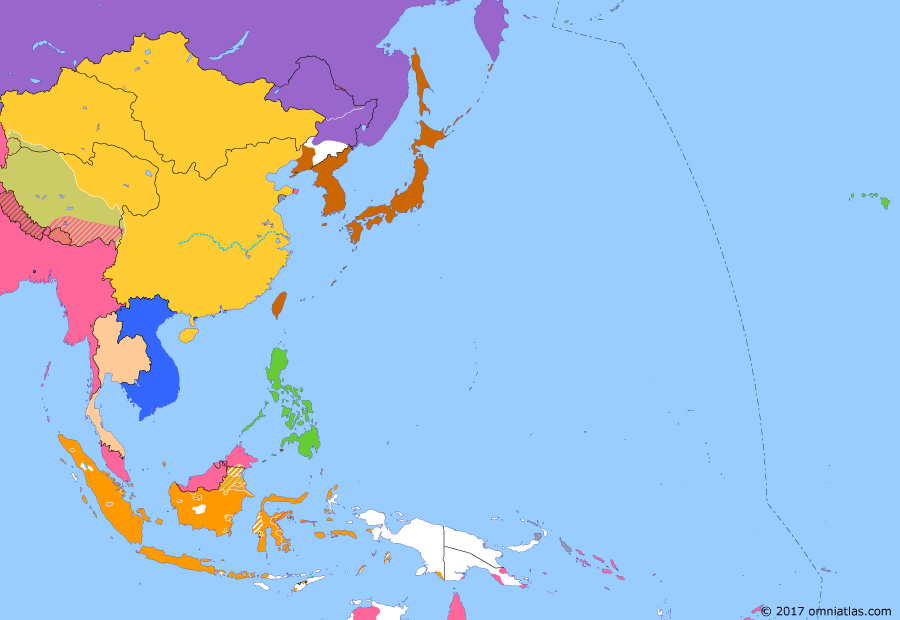Asia Pacific 1905: Russo-Japanese War
4 September 1905
4 Sep 1905
Russo-Japanese War
9 Jun 1894 Donghak Peasant Revolution
1 Aug 1894 First Sino-Japanese War
17 Apr 1895 Treaty of Shimonoseki
28 May 1895 Triple Intervention and Taiwan
13 Feb 1897 Philippine Revolution
22 Apr 1898 Far Eastern Crisis
30 Jun 1898 Spanish-American War
10 Dec 1898 Treaty of Paris
3 Jun 1899 Philippine–American War
16 Jun 1900 Boxer Rebellion
14 Aug 1900 Battle of Peking
7 Sep 1901 Boxer Protocol
30 Jan 1902 Anglo-Japanese Alliance
8 Feb 1904 Attack on Port Arthur
4 Sep 1905 Russo-Japanese War
8 Apr 1907 Anglo-French Agreement on Siam
Japan swiftly overran Korea and southern Manchuria, capturing Port Arthur after a prolonged siege. In an attempt to gain naval supremacy, Russia sent its European fleet halfway around the world - only to have the Japanese destroy it at Tsushima. Unsuccessful in the war and facing widespread unrest at home, the Russians sued for peace.
